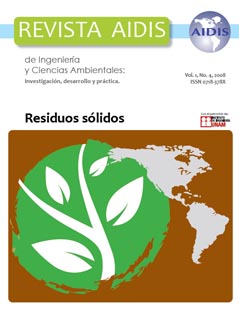Methodology applied in a study to evaluate the health risks of solid waste disposition
Main Article Content
Abstract
There are few studies that associate the environmental disposal of solid wastes with public health. To better explain the relationship between the final disposal of urban solid wastes and their influence on public health, this paper presents a methodology applied in a cross-sectional epidemiological study to evaluate the health risk to the population near Bandeirantes Landfill, located in Perus District, in the city of São Paulo, State of São Paulo, Brazil. Bandeirantes Landfill receives approximately 6,000 tons of Class IIA and IIB solid wastes on a daily basis. The landfill covers a total area of 1,400,000 m2 and contains approximately 33 million tons of waste. The risks to public health were evaluated among the resident population subject of this study, comprised of 972 children with ages ranging from one to five years old. The area of the study was divided into sectors 500-m distant from the landfill boundaries for determination of exposure conditions. The prevalence of diarrheal and parasitic diseases, longitudinal prevalence of diarrhea and anthropometric indexes were used as health indicators. A survey on the environmental quality was carried out in the area studied in order to correlate the environmental impacts caused by the final disposal to the health indicators used. The methodology applied proved to be appropriate to evaluate the correlations, subject of this work, and may be used in similar studies intended to evaluate the impact of the environmental disposal of solid wastes on public health.
